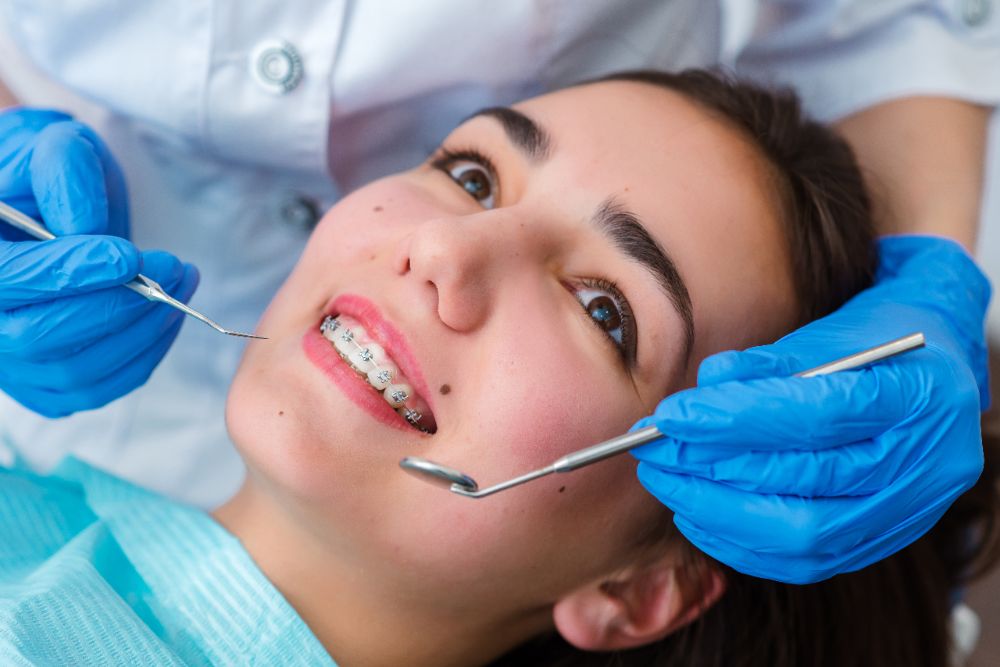Comprehensive Guide to Orthodontics Treatments for Fixing Oral Misalignments
Recognizing the intricacies of each treatment, including their mechanisms, benefits, and prospective downsides, is essential in making notified choices concerning one's orthodontic treatment. As we navigate through the detailed overview to orthodontic treatments for correcting dental misalignments, the complex details of each technique will certainly unravel, dropping light on the course towards a practical and unified oral placement.
Orthodontic Procedures Review

Along with clear aligners and traditional dental braces, orthodontists might likewise advise other treatments like headwear, palatal expanders, or retainers to attend to details placement problems (orthodontics). These treatments are customized to each patient's one-of-a-kind requirements and may entail a mix of treatments to accomplish the desired outcomes. Routine adjustments and surveillance are vital parts of orthodontic therapy to make certain progress gets on track and to make any type of necessary alterations along the road. By undergoing orthodontic treatments, patients can not only attain a straighter smile but likewise improve their general oral health and wellness and feature.
Standard Dental Braces: How They Work
When considering orthodontic treatments for dental misalignments, traditional braces stand out as a time-tested method for correcting teeth positioning. Traditional braces are composed of braces, cords, and bands that function together to apply continuous stress on the teeth, progressively relocating them right into the preferred positioning. The brackets are connected to the teeth using an unique adhesive, and the cords are threaded with the brackets. By changing the stress of the cords, orthodontists can control the direction and force put on each tooth, guiding them right into appropriate positioning in time.
As stress is applied to the teeth with the dental braces, the bone surrounding the teeth is reshaped to sustain the new tooth settings. Patients will require normal adjustments at the orthodontist's workplace to make certain the braces proceed to use the appropriate stress for reliable teeth movement.
Undetectable Aligners: Disadvantages and pros
Invisible aligners provide a convenient and discreet option to typical braces for fixing oral imbalances. These clear, customized trays are essentially unseen when put on, making them an appealing option for individuals seeking a much more cosmetically pleasing orthodontic therapy. Among the primary advantages of invisible aligners is their removability, permitting much easier upkeep of oral health contrasted to standard dental braces. People can get rid of the aligners before eating or brushing their teeth, lowering the risk of food getting embeded the appliance and streamlining the cleansing procedure.

Surgical Orthodontic Options
Surgical interventions in orthodontics existing viable alternatives for resolving complex oral imbalances that may not be successfully resolved with standard orthodontic therapies. While conventional dental braces and invisible aligners can correct lots of orthodontic concerns, particular cases need surgical treatment to attain optimal results. Surgical orthodontic choices are normally advised for severe malocclusions, significant jaw discrepancies, and situations where the underlying bone structure needs adjustment to attain correct placement.
One common surgical orthodontic procedure is orthognathic surgery, which involves repositioning the jaws to correct practical problems such as trouble chewing or speaking. This surgical treatment is commonly done in partnership with an orthodontist that assists straighten the teeth prior to and after the procedure. Surgical orthodontics may also involve procedures to reveal influenced teeth, get rid of excess periodontal cells, or reshape the jawbone to produce a more harmonious face account.
Before thinking about surgical orthodontic alternatives, people go through a detailed examination to identify the necessity and potential advantages of such interventions. orthodontics. While surgical procedure might seem daunting, it can significantly boost both the function and visual appeals of the smile in cases where standard orthodontic treatments drop short
Retainers and Post-Treatment Treatment

Post-treatment treatment involves adhering to the orthodontist's instructions faithfully. This may consist of appropriate dental health practices, participating in follow-up appointments, and putting on the retainers as prescribed. Failing to adhere to post-treatment treatment guidelines can lead to regression, where the teeth gradually relocate back in the direction of their initial settings. Regular retainer wear, good oral health, and regular dental exams are vital for keeping the results attained through orthodontic surgical procedure and ensuring the long-lasting security of the corrected dental positioning.
Final Thought
Finally, orthodontic procedures supply numerous options for correcting dental misalignments. Conventional braces utilize steel braces and cables to change teeth right into correct alignment. Invisible aligners offer a more discreet alternative but may not be ideal for all situations. Surgical orthodontic options are readily available for extra extreme imbalances. Retainers are generally made use of post-treatment to preserve the new positioning. In general, orthodontic procedures can efficiently enhance dental wellness and visual look.
As we browse through the detailed guide to orthodontic treatments for remedying dental imbalances, the complex details of each method will certainly unfold, losing light on the course toward a practical and unified dental alignment. - cumming invisalign
One of the most typical orthodontic treatments is the usage of braces, which consist of steel braces and cables that apply gentle pressure to slowly shift teeth right into the preferred position.When thinking about orthodontic treatments for dental imbalances, conventional dental braces stand out as a reliable method for cumming invisalign fixing teeth positioning. Furthermore, undetectable aligners may not be appropriate for intricate orthodontic problems that call for more considerable teeth movement, as they are normally recommended for light to moderate instances. Retainers are custom-made orthodontic gadgets designed to hold teeth in their fixed placements after the completion of orthodontic treatment.